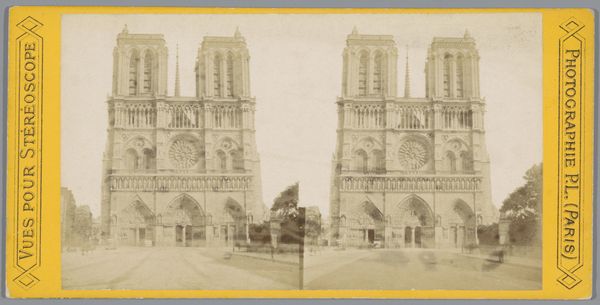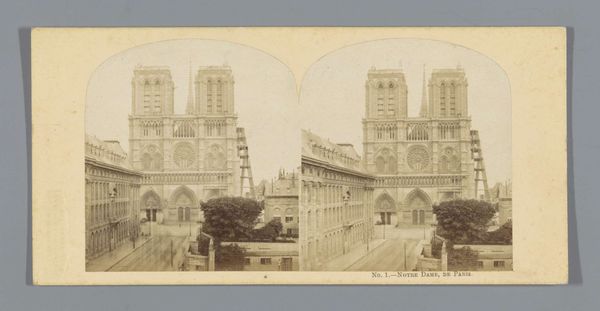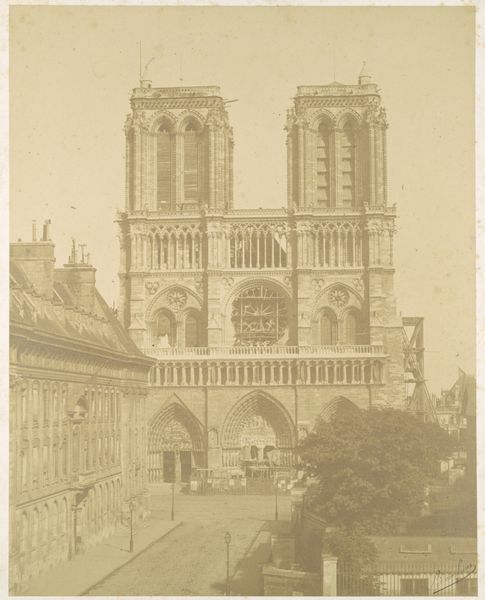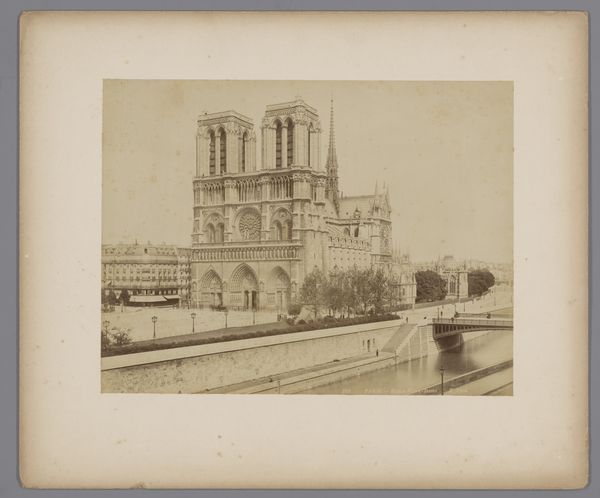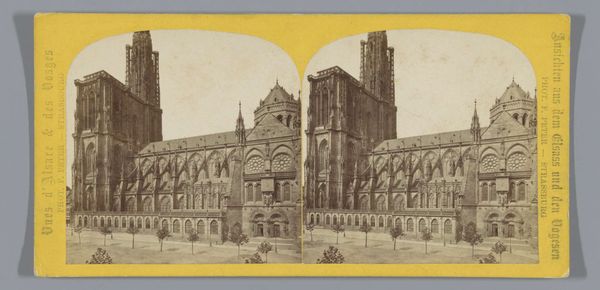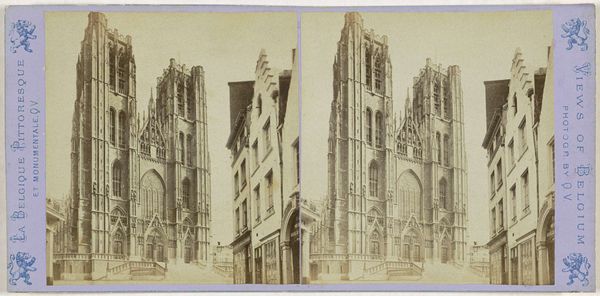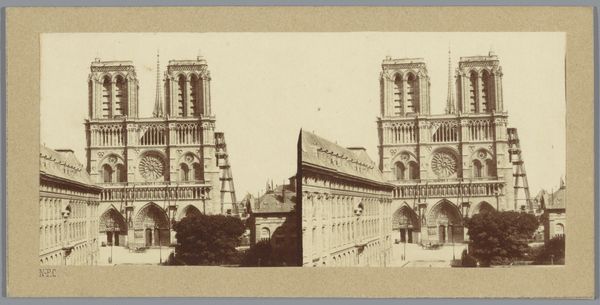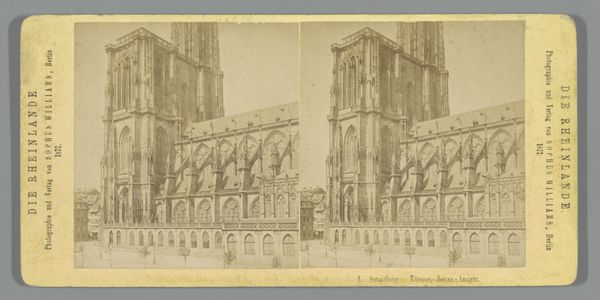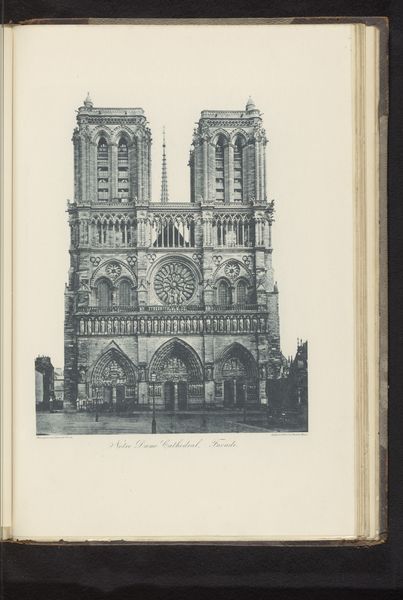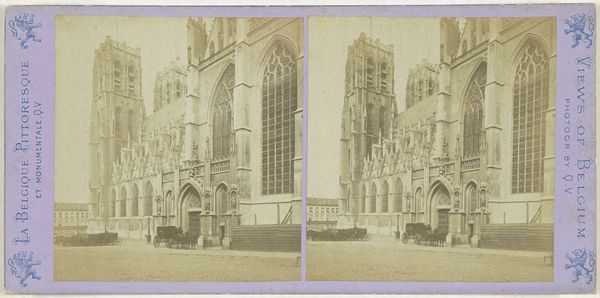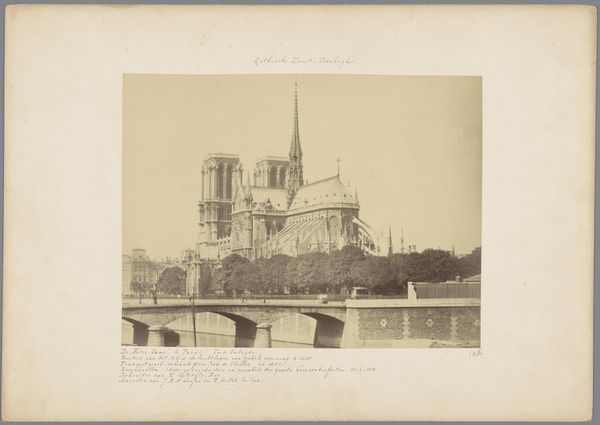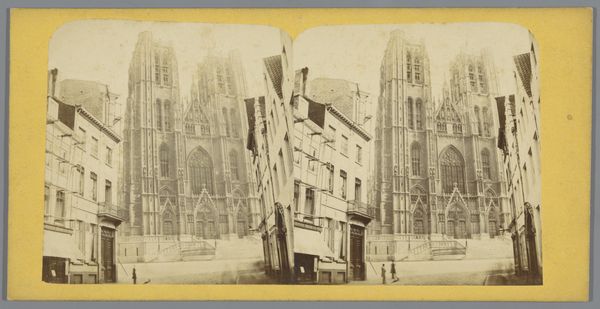
Dimensions: height 87 mm, width 175 mm
Copyright: Rijks Museum: Open Domain
Aaron Martinet captured the Notre-Dame's façade in a stereoscopic print. This process involves photography, but also methods of mass production and consumption. Think of the camera as a kind of loom, weaving together light and chemistry to create an image. The physical qualities of the print – its sepia tones, its crisp details, its portability – all stem from the collodion process used. This was a relatively new technology at the time, one that allowed for the relatively easy reproduction of images. The stereoscopic format is key. The double image creates an illusion of depth when viewed through a stereoscope. This was a popular form of entertainment, bringing distant places and famous monuments into the home. By purchasing this photo, people could possess a miniature version of a global landmark. Looking closely at this image, you can see how photography democratized art. It brought the world to people, fueling a culture of tourism and consumption. While a cathedral required the labor of countless stone masons, a photo merely required the click of a button, and the work of technicians who could produce countless prints from a single negative.
Comments
No comments
Be the first to comment and join the conversation on the ultimate creative platform.
